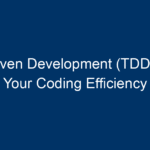In a universe filled with mysteries, the concept of space-time stands out as one of the most captivating. Often at the intersection of physics and philosophy, space-time is fundamental to understanding how our universe operates. As we delve into space-time education, we illuminate the secrets of the cosmos and empower learners to grasp complex ideas in an engaging manner. This article will explore what space-time education entails, its historical significance, practical applications, and how it can transform our understanding of the universe.
What is Space-Time?
Before diving into the realm of space-time education, it’s crucial to establish a clear understanding of the concepts of space and time. Traditionally viewed as separate entities, space and time were unified in the early 20th century through the groundbreaking work of Albert Einstein. His theory of relativity revolutionized our understanding, merging these dimensions into a single four-dimensional continuum known as space-time.
The Fabric of the Universe
Space-time is often described as a "fabric" that can be stretched or warped by massive objects like stars and black holes. This warping effect is crucial to our understanding of gravity; rather than viewing gravity as a mere force, space-time education teaches us to see it as a curvature of this fabric. The more massive the object, the greater the curvature, illustrating why Earth orbits the Sun.
The Role of Space-Time in Modern Physics
In modern physics, space-time is integral to several theories, including quantum mechanics, cosmology, and astrophysics. Understanding space-time is not just for physicists; it has implications for various fields, from engineering to even philosophy. By grasping these concepts, learners can appreciate the interconnectedness of various scientific disciplines.
Historical Background of Space-Time Education
The roots of space-time education can be traced back to the early 20th century, when scientists began to challenge Newtonian concepts. Einstein’s theories simplified complex ideas, making them more relatable to a broader audience. Following his lead, physicists like Richard Feynman and Stephen Hawking further popularized these concepts through innovative teaching methods.
Einstein’s Special and General Relativity
Einstein’s special relativity (1905) introduced the idea that time can vary for observers moving relative to one another. This was a significant shift from Newton’s absolute time concept. Then, in 1915, Einstein’s general relativity expanded this idea, introducing the curvature of space-time.
Advancements in Space-Time Education
Over the years, learning methods for complex scientific theories have evolved. Educational technologies, such as 3D visualizations, simulations, and online courses, have made space-time education more accessible. By integrating these technologies, educators can engage students in ways that were previously unimaginable.
The Importance of Space-Time Education
Understanding space-time is foundational not only in physics but also in our everyday lives. Here’s why space-time education is vital:
1. Broadening Perspectives
Comprehending space-time encourages critical thinking and broadens perspectives on fundamental questions about existence. What is time? Is it the same for everyone? Space-time education challenges students to consider these questions and seek answers grounded in science.
2. Real-World Applications
Space-time concepts have tangible applications, such as:
-
GPS Technology: Global Positioning Systems rely on adjustments for the effects of both velocity and gravitational fields on time, incorporating principles of relativity.
- Medical Imaging: Techniques like MRI utilize principles of physics that draw upon our understanding of space-time.
3. Inspiring Future Innovators
Engaging with space-time concepts fosters a sense of wonder, inspiring students to pursue careers in science, technology, engineering, and mathematics (STEM). As we unravel the mysteries of the universe, we simultaneously cultivate the next generation of innovators and problem solvers.
How to Engage with Space-Time Education
Incorporating space-time concepts into education doesn’t require advanced degrees or extensive resources. Here are some actionable strategies for educators and learners:
1. Utilize Multimedia Resources
Incorporate videos, animations, and interactive simulations into lessons. Websites like Khan Academy and educational YouTube channels can provide visual representations that simplify complex concepts.
2. Encourage Thought Experiments
Philosophical thought experiments can stimulate critical thinking. For instance, ask students to consider the implications of traveling near the speed of light. What would happen to their perception of time?
3. Implement Hands-On Activities
Engage learners through hands-on activities like building simple models of space-time curvature with fabric and marbles or using computer simulations to visualize gravitational waves.
4. Foster Discussion and Debate
Encourage students to discuss their views on space-time and its implications. Classroom debates can motivate learners to explore different perspectives and deepen their understanding.
5. Promote Interdisciplinary Learning
Highlight the intersections of space-time with other subjects such as philosophy, art, and history. Encouraging students to draw connections between disciplines can enrich their learning experience.
The Future of Space-Time Education
As technology advances, space-time education will continue to evolve. Virtual reality (VR) and augmented reality (AR) offer exciting opportunities for immersive learning experiences. Imagine exploring the cosmos, witnessing the curvature of space-time, or understanding black holes in a 3D environment.
The Role of Online Learning Platforms
Online platforms and courses focused on space-time education can democratize access to knowledge, allowing anyone with an internet connection to learn. This trend is crucial for making space-time concepts available to a broader audience worldwide.
Conclusion: Unlocking the Universe’s Secrets
Space-time education is not merely an academic exercise; it is a gateway to understanding the universe and our place within it. By illuminating complex concepts through engaging methods, we can inspire critical thinking, real-world applications, and a sense of wonder about the cosmos.
As learners and educators, we have the ability to unlock the universe’s secrets through space-time education. Embrace these concepts, utilize available resources, and inspire curiosity. The pursuit of knowledge can lead to innovative discoveries and a deeper appreciation for the intricate tapestry of the universe we inhabit.
Call to Action
Interested in exploring space-time concepts further? Look for online courses, documentaries, or local workshops centered on space-time education. Share this knowledge within your community—every conversation can spark curiosity and inspire future generations to continue unlocking the secrets of the universe.




